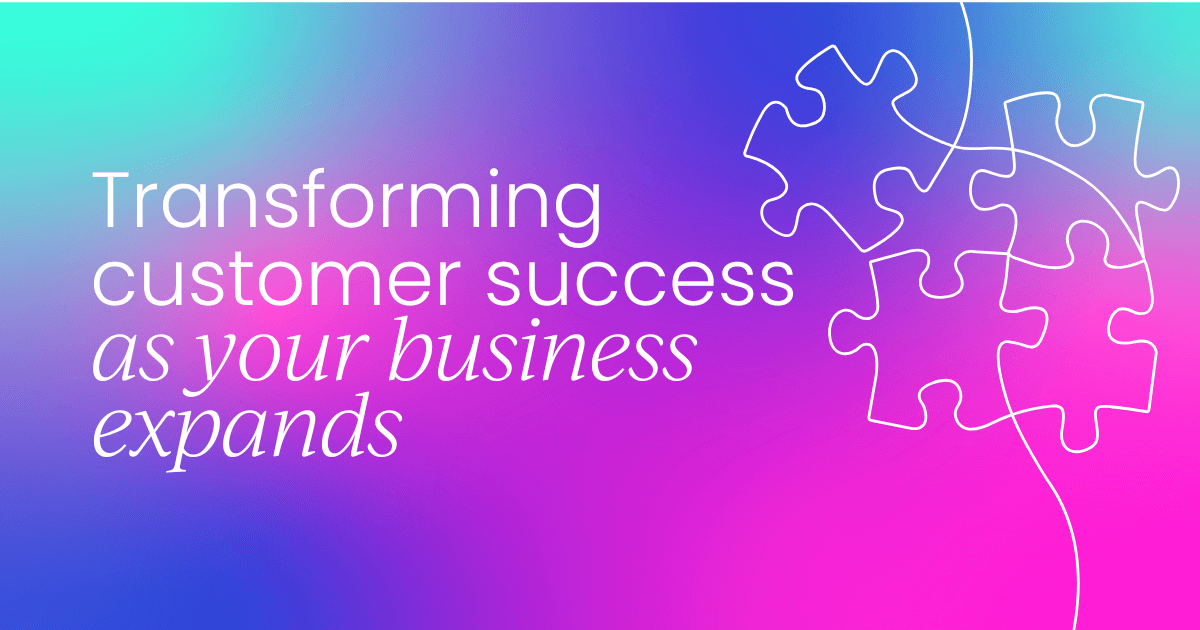Customer success isn’t a static function – it’s a living, evolving part of your business. And as your company grows, what worked yesterday won’t always work tomorrow.
From early-stage scrappiness to enterprise-scale complexity, each phase of growth brings new challenges – and new opportunities – for CS teams to step up, adapt, and lead.
But here’s the catch: success can’t scale on instinct alone. It takes structure, strategy, and a deep understanding of where your business is and where it’s going.
In this article, we’ll explore:
- How customer success evolves alongside your business, from startup to enterprise
- What CS should focus on at each stage of company growth
- The key metrics that signal progress, alignment, and maturity
- How to build scalable success programs without sacrificing the customer experience
- Why getting the foundations right matters more than jumping straight to AI and automation
Sustainable growth isn’t just about doing more – it’s about doing what matters, at the right time, with the right strategy.

The evolution of customer success
Over the past decade, customer success has transformed from an experimental concept into a critical growth driver.
Back in 2012, most of us were still figuring out what CS even meant – I certainly was. At the time, I was working in marketing, unaware of how central CS would become to long-term customer value.
By 2015, it was clear that without a focus on making customers successful, businesses risked losing them just as fast as they gained them.
Between 2017 and 2019, the SaaS industry led the way in proving the value of proactive CS, but today, CS has expanded well beyond tech. More and more, we’re seeing adoption in education, nonprofits, and traditional industries – because success is universal.
The pandemic in 2020 brought a pause, followed by a surge in growth in 2021. By 2022, we hit a reality check: headcount alone couldn’t keep pace with customer acquisition. That’s when digital customer success became a necessity.
Now, we’re entering the next phase – one driven by digital-first strategies, AI, and automation. The opportunity ahead is to harness those tools without losing the human connection that’s always defined great customer experiences.
The four stages of customer success
Every organization goes through stages when building out its customer success function. You can’t skip them or build them out of order – each one lays the foundation for the next.
Reactive
We start with reactive customer success. This is where your customer reaches out to tell you there’s a problem. It’s a stressful place to be – when your first signal of trouble is the customer waving a red flag. But for many organizations, this is the starting point.
Proactive
Next, we move into the proactive stage. This is where we begin to anticipate customer needs, offering help and resources before they ask – or ideally, just in time. It’s about removing friction and being intentional about the customer journey.
Personalized
From there, we can evolve into personalized customer success. At this stage, we’re not just sending out generic content or support – we’re tailoring our interactions based on what we know about each customer.
We’re offering specific recommendations, targeted resources, and curated experiences that speak directly to where they are in their journey.
Predictive
Finally, there’s predictive customer success. This is where we use AI and other tools to forecast customer behavior and proactively guide next steps. It’s the most advanced stage and one that many organizations are still working toward.
If you're reading this and thinking, "We’re still in the reactive or proactive stage," you're not alone. Personalized and predictive experiences are aspirational for a lot of teams, especially those in industries outside of tech. And that’s okay.
The important thing is knowing where you are and being intentional about where you’re headed.
A customer success department is built in stages. Each one has to build on the next. If you build them out of order, it’s not going to work.
You can’t jump straight to predictive without first understanding what you need to react to, what you can be proactive about, and how to personalize those experiences.
When you take the time to build each layer thoughtfully, you’ll end up with a much stronger, more scalable CS model in the long run.




 Follow us on LinkedIn
Follow us on LinkedIn



